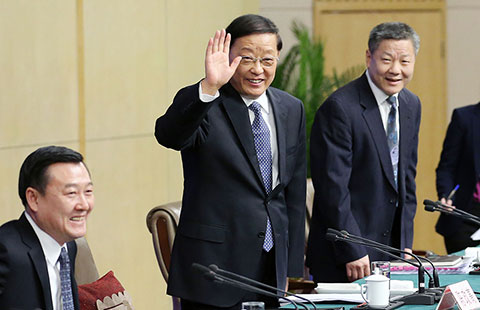Executives survey the prospects for China's future prosperity
(China Daily) Updated: 2016-03-16 09:54
 |
|
Steffan Huber, Senior Covestro Representative, Greater China. [Photo provided to China Daily] |
A1: China's Government has set the goal of achieving "a moderately prosperous society" by 2020, based on 2010 GDP. To achieve this within an increasingly consolidating economy, China will need to grow annually by 6.5 percent on average. The range points to the fact that China's government is realistic about the challenge of balancing several key tasks: Implementing the necessary structural reforms to create a more sustainable and innovative economy, while at the same time reassuring the Chinese people that raising overall living standards remains a priority, and China will continue to be a global economic engine.
A2: Stimulating stronger domestic consumption in China is a national priority. Meeting domestic demand provides numerous opportunities for growth. At the same time, products made in China will need to be of higher quality and be more innovative. Innovation and the call for more sustainable growth that requires more environmentally friendly manufacturing, will spur, for example, new technologies. Similar challenges in Europe in the 1980s triggered the development of a completely new industry revolving around cleaner technologies.
Meanwhile, overcapacities continue to put pressure on product prices. China's government is addressing the topic twofold: With regulations to stimulate more competitiveness of products and manufacturers, and with long-term campaigns to develop new markets and product outlets, such as the Belt and Road Initiative. If related regulations are unanimously enforced across all players, it will improve the long-term competitiveness of industries.
A3: Supply-side reform aims to improve quality and cost-efficiency in businesses. This is not new to Covestro. To stay globally competitive, we constantly work to improve efficiency and productivity across company operations. We embrace sustainability and innovation because new technologies, for example, in production, help to bring down energy consumption. The drive for sustainable urbanization through energy-efficiency programs in buildings and transportation calls for materials that effectively insulate houses or make vehicles lighter.
A4: Apart from efforts to stimulate spending to counter the economic downturn, the moderate increase is projected to cover tax and fee reductions that will further relieve burdens on businesses in certain sectors. After the formal implementation of the business-to-VAT reform, we foresee that the tax burden on our company will be further reduced. Besides, companies with a lower tax burden have more purchasing power to expand businesses by investing in sustainable projects and innovative technologies. Meanwhile, enabling the government to spend more money due to a more proactive fiscal deficit target will mean more infrastructure projects and offer new opportunities for companies.
- Q&A Transcript: Overcapacity
- Q&A transcription: The five major social insurance programs and housing provident fund
- Q&A Transcript: New economy
- Q&A Transcription: China's economic growth and transition
- New growth engines will help economy to restructure, says Premier Li
- Q&A Transcription: Financial market
- Premier Li assures reform, protection of workers' interests
- Q&A Transcription: Shenzhen-Hong Kong Stock Connect
















